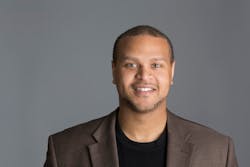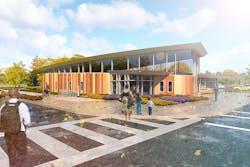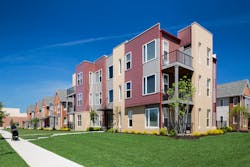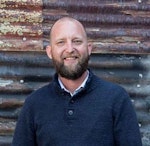Equity in Design Is a Conversation Worth Having Because It Can Change the World
It’s no secret that the A&D industry is one that has historically struggled with equity and inclusion. By the latest available stats, the interior design profession is 86% white, and the American Society of Interior Designers reports that less than 2% of its members identify as Black, according to a Forbes.com article.
In an industry as universal and creative in nature as design, its continued homogeny is illogical at best. Change is happening, to be sure, but it is a relatively slow march toward progress.
i+s recently caught up with Jonathan Moody, AIA, NOMA, the president/CEO of Moody Nolan, to get a pulse on where we are as an industry and how the profession of design can be a catalyst for change.
i+s: Where are we on the road to realizing more equitable and sustainable communities, particularly in Black and other underserved neighborhoods?
i+s: What are the barriers or challenges to achieving parity in architecture and design, and how do we go about overcoming them?
JM: Many of the challenges in architecture and design are systemic. They’ve been developed over many years and will be difficult to change quickly. One example would be simple access to certain design conversations. More often than it should be, the people who are impacted by design do not have any ability to participate in important conversations that drive the design. If designers can get the right people in the conversation and ask the right questions, it will help establish industry parity.
i+s: How does Moody Nolan as a firm approach the equity conversation?
JM: Our design philosophy revolves around the concept of responsive architecture. This approach posits that better outcomes will be achieved through involving more people in the design conversation and pushing toward solutions that reflect the people and places they serve. One tool with this approach is to think of design concepts not as solutions but as conversation starters around values. Often, we start with our “nine square” process, which presents nine different approaches to the values of a project. When we can get the right people involved with the process, we can leverage the conversation to discover the most important values to a particular community. The design process evolves not as a formal exercise but as a continued refinement of what values are most important and most responsive to a community.
i+s: What are some actionable items architects and interior designers can take to help ensure more equitable and sustainable communities?
JM: Some things that designers can consider doing now are to assume the responsibility of pushing clients, consider creative funding models and tailor their tools to address known inequities. Each day we as designers are seeing continued stagnation on policies to address sustainable communities. I believe we cannot wait on clients to address these topics or policies and we should take the lead on pushing for creative solutions in our work.
We also need to recognize that aspects of our work that might not be within our budgets might be eligible for grants, crowdfunding or other creative funding methods if we look outside of traditional sources. Each project is different, and we may be able to be successful in implementing a design idea if we can help our clients to leverage creative funding sources. We also need to challenge ourselves to review our library of resources to ensure what we are specifying or designing around is aligned with our design values of sustainability and equity.
i+s: What are you hopeful about in terms of the impact that design and architecture can have on affecting change?
JM: I believe that design is one of the ultimate tools that we have to make change. When you design, you get the opportunity to consider a future that’s better, then go out and do the things each day that are necessary to make it happen. That is an expression of hope and values. What makes me hopeful is the look I get from so many people who believe we have the ability to make our world better. We just need to recommit to that calling and act on it each day.




